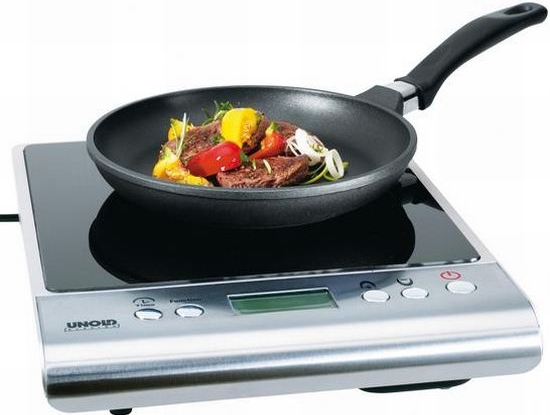With induction cooking, energy is supplied directly to the cooking vessel by the magnetic field; thus, almost all of the source energy gets transferred to that vessel. With gas or conventional electric cookers (including halogen), the energy is first converted to heat and only then directed to the cooking vessel--with a lot of that heat going to waste heating up your kitchen (and you) instead of heating up your food. (The striking image at the left shows how precisely focussed heat generation is with induction--ice remains unmelted on an induction element that is boiling water!)
As a comparison, 40%--less than half--of the energy in gas gets used to cook, whereas with induction 84% percent of the energy in the electricity used gets used to cook (and the rest is not waste heat as it is with gas). There are two important heat-related consequences of that fact: cooler kitchens: of course the cooking vessel and the food itself will radiate some of their heat into the cooking area--but compared to gas or other forms of electrically powered cooking, induction makes for a much cooler kitchen (recall the old saying: "If you can't stand the heat, get out of the kitchen."); and a cool stovetop: that's right! The stovetop itself barely gets warm except directly under the cooking vessel (and that only from such heat as the cooking vessel bottom transfers). No more burned fingers, no more baked-on spills, no more danger with children around. (The photo at the right--one of several similar ones to be found on the web--shows, like the one above, how only the cooking vessel does the actual cooking.)








0 comments:
Post a Comment